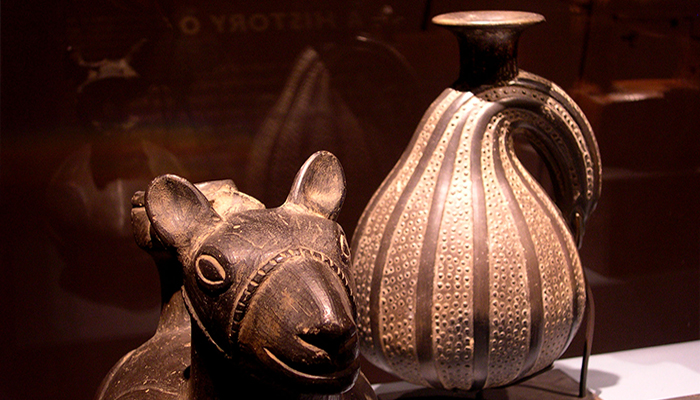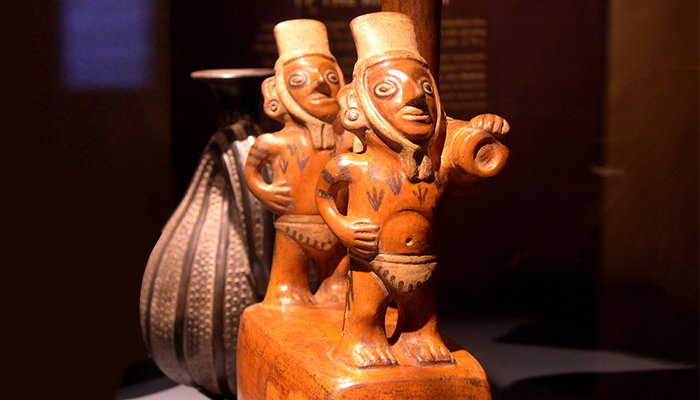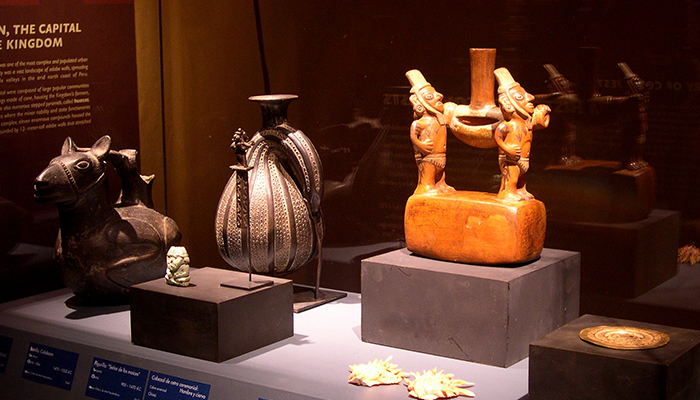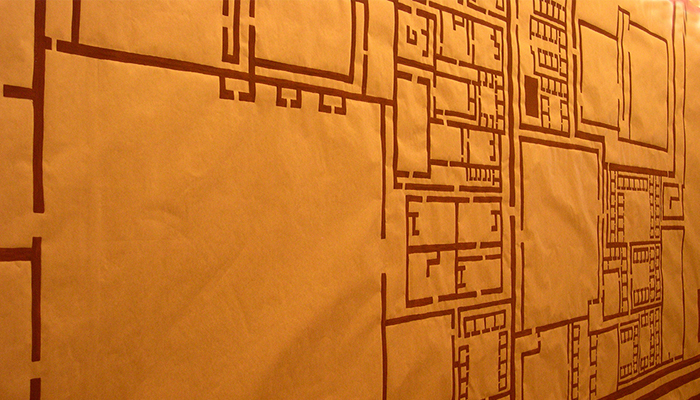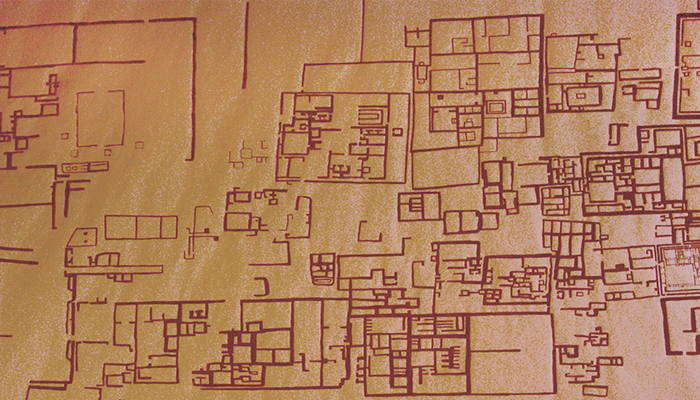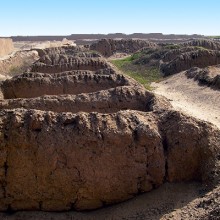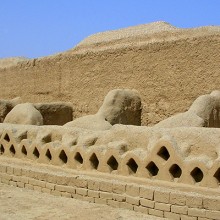Chimu, Labyrinths of a sacred costume
The Chimor Kingdom: A history of conquests
By AD 1200, the leaders of the Chimú polity or Chimor Kingdom had consolidated its territory in the Moche Valley and were ready to conquer new lands. They then extended their Empire from the Jequetepeque River in the north to the Santa River in the south. Two centuries later, the imperial frontiers expanded to the Túmbez River on the north to the Chillón Valley on the south, thus covering an extension of 1,300 lineal kilometers (almost 800 miles). When the Chimú polity reached its peak, it controlled two thirds of the arable land along the Peruvian coast, as well as a similar proportion of the population that lived in the desert region.
Chimú rulers were able to resist Inka territorial ambitions for a time, but by 1470, their emperor Minçhancaman had been defeated and taken to Cuzco. Under the control of the Inka Empire and governed by a local puppet ruler, the Chimú underwent gradual dismemberment. With the arrival of the Spanish Conquest, epidemics that decimated the coastal people spread, completing the social disintegration of the once-powerful Chimor Kingdom.




































